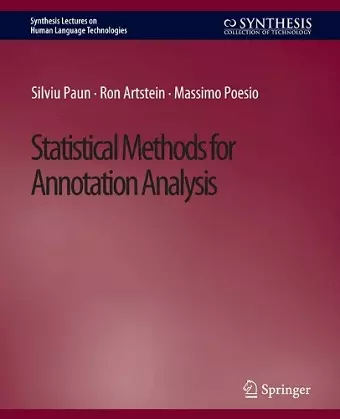Statistical Methods for Annotation Analysis
Silviu Paun author Ron Artstein author Massimo Poesio author
Format:Paperback
Publisher:Springer International Publishing AG
Published:13th Jan '22
Should be back in stock very soon

Labelling data is one of the most fundamental activities in science, and has underpinned practice, particularly in medicine, for decades, as well as research in corpus linguistics since at least the development of the Brown corpus. With the shift towards Machine Learning in Artificial Intelligence (AI), the creation of datasets to be used for training and evaluating AI systems, also known in AI as corpora, has become a central activity in the field as well. Early AI datasets were created on an ad-hoc basis to tackle specific problems. As larger and more reusable datasets were created, requiring greater investment, the need for a more systematic approach to dataset creation arose to ensure increased quality. A range of statistical methods were adopted, often but not exclusively from the medical sciences, to ensure that the labels used were not subjective, or to choose among different labels provided by the coders. A wide variety of such methods is now in regular use. This book is meantto provide a survey of the most widely used among these statistical methods supporting annotation practice. As far as the authors know, this is the first book attempting to cover the two families of methods in wider use. The first family of methods is concerned with the development of labelling schemes and, in particular, ensuring that such schemes are such that sufficient agreement can be observed among the coders. The second family includes methods developed to analyze the output of coders once the scheme has been agreed upon, particularly although not exclusively to identify the most likely label for an item among those provided by the coders. The focus of this book is primarily on Natural Language Processing, the area of AI devoted to the development of models of language interpretation and production, but many if not most of the methods discussed here are also applicable to other areas of AI, or indeed, to other areas of Data Science.
ISBN: 9783031037535
Dimensions: unknown
Weight: unknown
197 pages